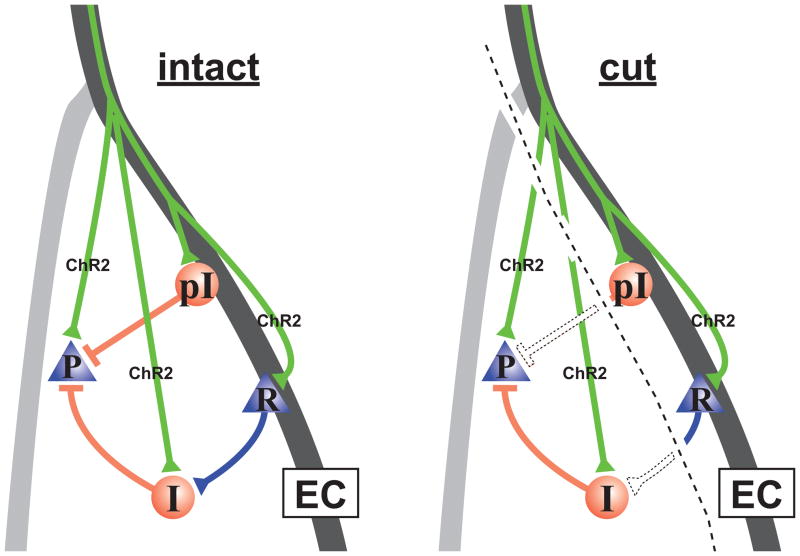Figure 7.
Schematic representation of potential inhibitory mechanisms recruited through EC. Left: According to scenario 1, fibers from TeA (green lines) fire paracapsular GABAergic neurons (pI), which provide feed-forward inhibition of PN (P) inside LA. According to scenario 2, fibers from TeA activate hypothetical glutamatergic relay cells (R). The relay cells recruit GABAergic neurons inside LA (I), which increase inhibition in LA PNs. Right: Transection of EC eliminates both inhibitory mechanisms, but does not prevent photoactivation of TeA fibers, which contain ChR2.

